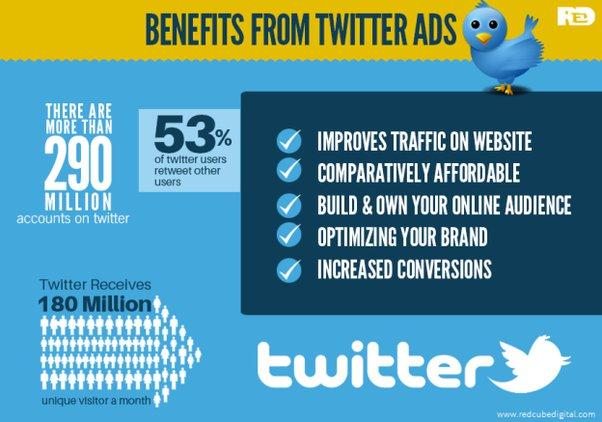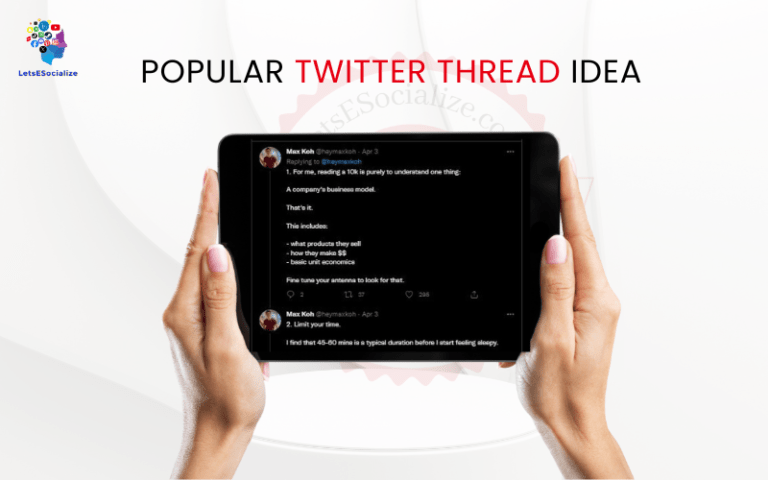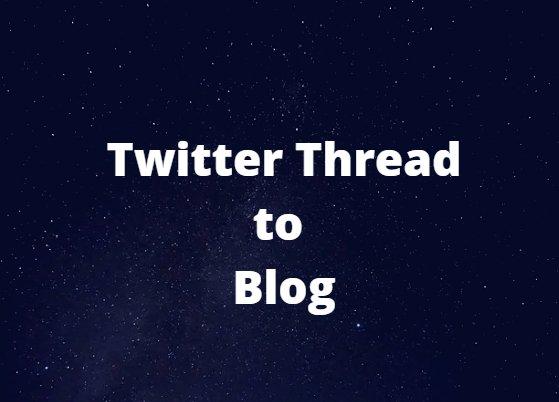Twitter can be an incredibly powerful platform for building engaged communities around shared interests. Whether you want to grow a fanbase for your brand, connect with like-minded individuals, or boost audience interaction, cultivating an active Twitter community takes strategy and commitment.
This comprehensive guide covers proven tips for creating a vibrant Twitter community that keeps users returning.
Table of Contents
Defining Your Community’s Purpose and Focus
The first step is identifying the specific purpose your Twitter community will serve:
- Are you building it for an existing brand, creator, or organization? Make sure it aligns with their overall mission.
- Is it focused on a niche interest like gaming, sports, or investing? Keep the topic narrow enough to attract a targeted audience.
- Do you want it to foster discussions, share resources, or have fun? Managing expectations upfront is key.
Some elements to define:
- Ideal member personas – Detail the profiles of members you want to attract (demographics, interests, goals, etc.)
- Content focus – Determine the types of tweets, links, and images to share regularly.
- Brand guidelines – Set rules for acceptable topics, hashtags, tone, and language if representing an established brand.
- Interaction goals – How much engagement do you want? Is it more about driving conversation through replies or sharing valuable resources?
Crafting Your Community’s Identity and Assets
After defining the purpose and focus, build out branded assets that reflect your community’s identity and personality:
- Handle – Brainstorm a unique but relevant @ handle name related to the topic.
- Profile photo – Design an identifiable avatar to stand out. Can incorporate logos, mascots, etc.
- Header image – Banner that conveys the community’s focus. It can include a mission statement or tagline.
- Bio – Concise explanation of what the community is about; ideal length is 120-160 characters.
- Channel art – Visual banners for profile and header that establish a cohesive look.
- Hashtags – Compile relevant niche hashtags to unify conversations. Create a unique one, too.
These elements attract the right members who appreciate the well-defined focus and purpose.
Crafting Impactful Community Tweets
Tweets are the lifeblood of a Twitter community. To spark ongoing engagement, create content that informs, entertains, or inspires members.
Types of Tweets to Send Regularly
- Industry news – Commentary on latest developments.
- Behind the scenes – Give your brand/organization an insider perspective.
- User-generated content – Repost great content posted by members using hashtags.
- Motivational quotes – Uplifting messages work well for some communities.
- How-to tips/advice – Provide value by teaching something useful.
- Live coverage – Tweet play-by-play of in-person or online events.
- Polls and questions – Solicit quick feedback and reactions.
- Reminders – Share key dates, deadlines, or recaps.
Best Practices For Quality Tweets
- Write clear, scannable sentences focused on one main idea.
- Add emojis, GIFs, or images to boost visual appeal.
- Use multimedia like videos and audio clips when possible.
- Ensure proper attribution when embedding or mentioning other accounts.
- Reply to users who engage with your tweets to continue conversations.
- Use 10-15 relevant hashtags naturally to expand reach.
- Promote best tweets with Twitter Ads if needed to reach more users.
Also read: Protecting Tweets in Twitter Privacy Settings
Grow Your Community Through Outreach
Relying solely on organic growth can take a lot of work. Proactively connect with potential members interested in your niche using these approaches:
- Search relevant hashtags – Engage with Tweeters by liking, commenting, and following.
- Connect with influencers – Partner with those with overlapping audiences.
- Host Twitter chats – Pick a hashtag and time for regular live discussions.
- Run contests/giveaways – Award prizes to boost shares and follows.
- Cross-promote content – Share your tweet links via email lists, websites, or other social channels.
- Invite guests – Have esteemed sources do Twitter takeovers to engage their followers.
- Use auto-follow tools – Follow/unfollow those in your niche to gain visibility.
- Advertise strategically – Promoted trends and ads help gain more targeted followers.
Tools to Manage and Analyze Your Community
Maintaining an active Twitter community takes time and consistency. These tools help streamline management:
- Hootsuite/Buffer – Schedule tweets in advance and manage multiple accounts.
- Tweetdeck – Monitor hashtags, keywords, and conversations in real time with custom columns.
- RiteTag – Auto-analyzes tweets and suggests the best tags for reach. Great for identifying relevant niche hashtags.
- Followerwonk– Helps sort followers by location, interests, and influence scores to better understand your audience.
- Union Metrics – Tracks detailed analytics like engagement rates, tweet performance, and follower growth over time.
- Mention – Gets alerts on brand mentions so you can respond quickly. Also analyzes sentiment.
- Follower Audit – Evaluates followers to identify bots vs real users. Helps keep your community authentic.
Creating Community Conversations
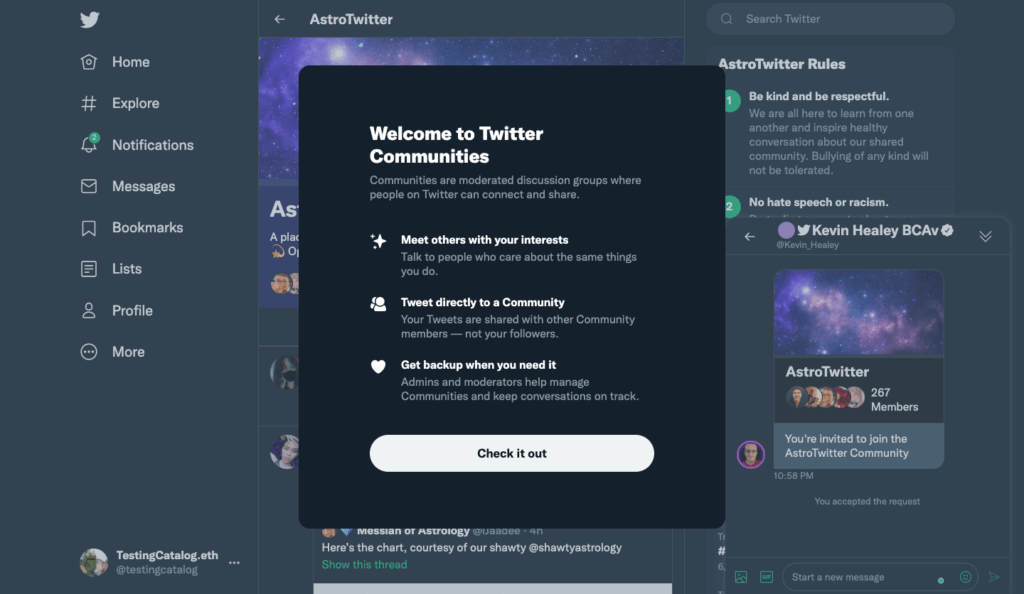
The most active communities discuss debate, and share with fellow members daily. Keep conversations flowing with these approaches:
- Post open-ended questions – Solicit opinions, thoughts, stories, and advice.
- Run weekly chats – For example #MondayMotivation or #WisdomWednesday.
- Spotlight diverse members – Showcase different perspectives from all member types.
- Share the spotlight – Have a “Member Takeover Tuesday” where you highlight others’ content.
- POLL your audience – Gets quick feedback on topics and reacts to responses.
- Foster member generosity – Encourage generous sharing of insights between members.
- Resolve conflicts calmly – Defuse tensions and disallow personal attacks if debates get heated.
Develop Member Relationships
Building personal connections between members creates loyalty and satisfaction. Humanize your community with these relationship-building tactics:
- Share user content – Retweet and comment on members’ creative posts.
- Respond to every mention – No comment should be ignored when possible.
- Give exclusive access – Send special offers or content for members.
- Wish happy birthdays – Find member birthdays in bios and tweet messages.
- Host Twitter chats with live video – Puts faces to handles for more familiarity.
- Feature member spotlights – Highlight helpful individuals and stories showcasing diversity.
- Send periodic surveys – Ask for input to improve the community and make members feel valued.
- Coordinate in-person meetups – Plan local events to interact beyond the screen.
Set Community Rules and Guidelines
With many personalities interacting, drama can ensue. Define what behavior is and isn’t allowed with rules like:
- Respect everyone’s opinions and privacy.
- No bullying, harassment, threats of violence, or doxxing.
- Abide by all Twitter terms of service.
- Disclose affiliations and vested interests.
- No spamming or self-promotion without giving back to the community.
- Let’s keep it PG-13 rated.
- Stay on topic as much as possible.
Enforce rules consistently and remind members periodically. Also, allow them to give feedback on guidelines.
Appointing Reliable Moderators
Moderating conversations and members can be demanding for one person. Appoint help from committed members:
- Select mature individuals who regularly contribute insights.
- Rotate moderators so the burden doesn’t fall on just one person.
- Define their duties like filtering certain words, identifying rule breakers, blocking abusive members, etc.
- Give them limited privileged access to tools like blocking and muting as needed.
- Have a monthly check-in process to get their feedback on community health.
Handling Challenging Scenarios
Despite best efforts, issues can plague communities. Be prepared to calmly and decisively handle challenges like:
Toxicity – Diffuse tensions. Warn, mute or block as necessary.
Doxing/Harassment – Report to Twitter immediately and support targeted members.
Hacks/Imposters – Alert community of unauthorized account access. Report to Twitter support.
Rule violations – Issue clear warnings before muting or blocking members.
Unsolicited promotions – Politely ask members to refrain from self-promotions or sales pitches.
Off-topic posts – Redirect conversations back on topic by referring to your community’s purpose.
Scammers – Ban them immediately and alert your community to avoid engagement.
Measuring Community Growth and Engagement
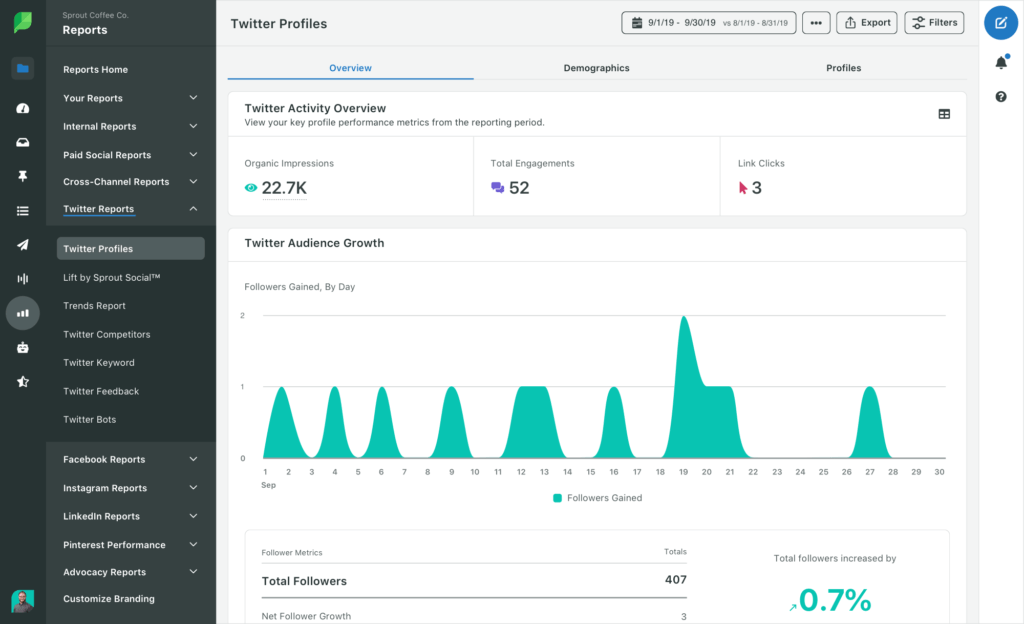
It’s essential to monitor analytics to track your progress and identify areas for improvement. Look at:
- Follower count over time, Follower-to-following ratio
- Tweet impressions, engagement rate
- Mentions and retweets
- Hashtag usage
- Traffic from clicks
- Audience demographics
Tools like Measured, TweetReach, and Union Metrics reveal these key metrics. Set measurable goals and tweak strategies to meet them.
Evolving Your Community Over Time
Communities must adapt as they grow. Periodically evaluate what’s working and what needs adjustment:
- Gather feedback – Survey members or host community town halls to get suggestions.
- Assess participation – See which members contribute most or least. Re-engage inactive ones.
- Evaluate content – Determine what posts resonate best and do more of that.
- Check rules – See if guidelines need updating to address recurring issues.
- Change moderators – Cycle in fresh mods if current ones get burnt out.
- Try new formats – Test different types of posts like Twitter Spaces or multimedia.
- Set new goals – Identify fresh benchmarks for growth, engagement, or quality.
Promoting Your Community Appropriately
While you want growth, avoid overly sales tactics that look inauthentic. Use these subtle methods:
- Share your community updates across other channels organically.
- Respond to Twitter mentions of your community handle thanking newcomers.
- Put a community handle in your profile to get it in front of all your followers.
- When relevant, mention it in comments within niche hashtags and groups.
- Collaborate with non-competitive communities to co-promote.
- Occasionally promote special events like Twitter chats to attract first-timers.
Fostering Long-Term Success
Sustaining a thriving community takes constant focus. Use these practices to ensure long-term health:
- Keep listening to feedback and being responsive.
- Maintain consistent activity and conversation.
- Balance member spotlights fairly.
- Celebrate growth and engagement milestones.
- Monitor for burnout and change things up if needed.
- Promote the tangible value and benefits of being a member.
- Reward and recognize your most loyal and active advocates.
- Stay on top of Twitter’s evolving features to use new tools.
Building an engaged Twitter community takes time but pays dividends. Utilizing these best practices will help you gain devoted members who have provided value for years!


